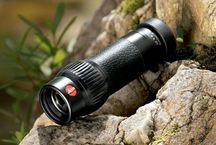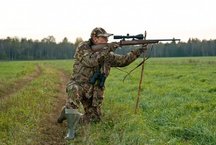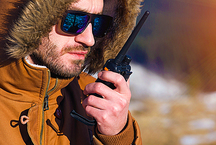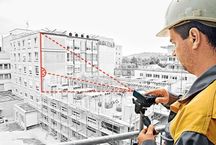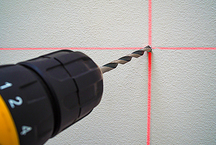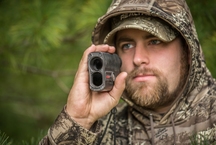7 best thermal imagers

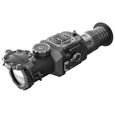

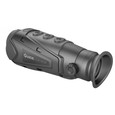

Thermal imagers are often confused with night vision devices, but these are completely different things. NVD is, in fact, an amplifier of light, that is, it will need at least a small, but present, illumination in the visible part of the spectrum, bright flashes are able to “light up” the matrix, blinding the NVD, like a human eye. A thermal imager, on the contrary, can “see” even in complete darkness: its matrix works exclusively in the infrared range, and it literally “sees heat”, while the bright light is completely indifferent to it (it will not pass through the IR lens itself). The use of thermal imagers has long ceased to be the prerogative of the military and the heroes of the fantastic militants: both hunters and builders can “translate” their vision into the infrared range. The first thermal sight is best suited for night hunting, the latter can literally see the leakage of heat in the building. Similarly, a thermal imager can be useful for searching for overheating nodes of a complex mechanism, poor contact in a powerful circuit. Yes, even photographers manage to use thermal imaging devices in their art, after all!
Naturally, the instruments used are completely different. Well, let's take a risk today if we don’t “embrace the immense,” then at least try to do it.
Top thermal imagers rating
| Category | A place | Name | Rating | Price |
|---|---|---|---|---|
| The best thermal imaging sights for hunting | 1 | Dedal venator | 9.6 / 10 | 320 000 |
| 2 | Fortuna General One 6s | 9.4 / 10 | 369 900 | |
| The best thermal imagers for observation | 1 | Guide Infrared IR510X | 9.4 / 10 | 99 000 |
| The best industrial thermal imagers | 1 | Fluke TiS75 | 9.9 / 10 | 420 000 |
| 2 | TESTO 868 | 9.6 / 10 | 145 000 | |
| 3 | CEM DT-9868 | 8.8 / 10 | 31 900 | |
| Top Thermal Imaging Consoles | 1 | Seek Thermal Compact XR | 9.6 / 10 | 27 950 |
The best thermal imaging sights for hunting
|
320 000
Traditionally, for thermal imaging sights, the price of "Daedalus" is not small (although this is not the most sophisticated model, prices for which start from a million), but, in fairness, and the hunt is different. If for the owner of Saiga the purchase of a thermal imager punches a hole in the budget that is greater than the cost of the whole weapon safe with all its contents, then for the owner of a Blazer under .375H & H the sight will not look so scary anymore. We remembered this caliber not in vain: the manufacturer of the sight ensures that it is able to withstand the impact of such “elephant fights”. And it is especially pleasant that the developer of the sight is a Russian company, which has already proven itself in the market of thermal imaging equipment. “Venator” has become the newest model in the lineup, based on the old T2.380, while not only receiving improvements, but also cheapening by the factory price by almost 60 thousand. As a sight, it is a fixed “treachery”, however, the electronics processing the signal from the matrix, by interpolation, offers two options of the final approximation - 2 or 4 krat. A good choice for the most common night hunts in our country. The sensor operates at a frequency of 50 Hz, its physical resolution is 384x288 pixels. The sight starts quickly - no more than 3 seconds, and this again goes into the treasury of its advantages. Since we are introducing electronics into the scope, then we should take the maximum from it, right? Well, Venator offers us not only 5 variants of aiming grids (from a simple cross to tricked ballistic) with an alignment step of 1.7 mm per 100 m, but also the basic functionality of a ballistic calculator. And the presence of video output makes it possible to directly “write” a video about your memory hunt from a sight. Provided and connect an external rangefinder - however, it already turns out not hunting, but some regular mission from Call of Duty! Main advantages:
Minuses:
|
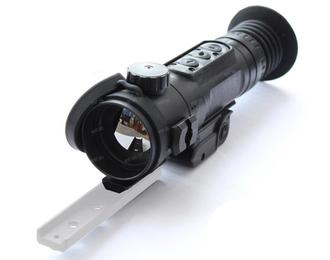 9.6 / 10
Rating
Reviews
For two hunts, three fingerlings were obtained, both from the labaza and from the approach. The sight itself just showed perfectly. |
|
369 900
The thermal sight looks “high-tech” and at first glance it’s interesting in terms of characteristics when compared with the closest competitor (the closest, by the way, and geographically, both companies are registered in Moscow). How do you like a matrix with a physical resolution of 640x480, for example? However, in reality, the imager loses somewhat to the same “Venator”. The fact is that the optics directly provides an approximation of only 1.7 krat, that is, all final approximations (from 3.4x to as much as 13.6x) are formed by interpolation. As a result, the image quality of the Dedal Venator is the best, and with the need for more than tenfold maximum "zoom" in the "Fortune" it is possible to argue, and not only from the point of view of sporting hunting. In addition, the frame rate at Dedal Venator is exactly twice as high, and this is important when shooting at a moving target: even if you are familiar with the weapon only from network computer "shooters", you will understand the difference (more precisely, fans of shooters and understand the difference faster than hunters, hehe). Optical tuning in this line was abandoned - if previous generations of sights, which were targeted precisely by moving a part of the optical system, caused complaints about the loss of STP under the effect of recoil, then they decided to enter brutally, fixing the optics tightly. The adjustment, accordingly, became “digital”, and at each multiplicity you can enter your own corrections. This is quite interesting, because usually each multiplicity is applied at a certain range of distances, that is, you can, for example, aim the sight at 50 meters at the minimum multiplicity, at 150 meters, and so on. As a result, you can quickly shoot offhand, without wasting time on the calculation of amendments. But the shooting itself will inevitably require more time and ammunition. Finally, the loss to “Daedalu” was expressed in the deterioration of autonomy - even in the warmth, Fortuna “eats” batteries much faster, and even more so in winter. In addition, the difference in weight is almost 200 grams: alas, the fortune of our rating of the best thermal imagers has turned its back on the Fortune. Main advantages:
Minuses:
|
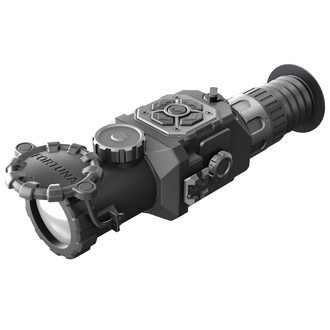 9.4 / 10
Rating
Reviews
With the bracket I had to suffer (under the heavy sight, initially “floated away”), but in the end I will call a decent thing, and it is perfectly suitable for hunting. |
The best thermal imagers for observation
|
99 000
The common model of a thermal monocular immediately gives its origin to the price: as expected, the company that produces this thermal imager is “spelled out” in China. But if this does not affect the quality, then why not - not everyone will allow the budget to buy, say, FLIR Scout TS32r for more than 600 thousand? It remains to be seen whether 99,000 in this case will not be a waste of money. The IR matrix here has a resolution of 400x300 pixels, and it is manufactured using 25 nm technology: of course, it already looks a bit old against the background of modern mass 17-nm matrices, and the power consumption is high, but physical noise is also less. However, everything is spoiled by the fact that for any value of the zoom (2 or 4 krat) the monocular works with interpolation, since the approximation of the optics itself is only 1.1 krat. You can, of course, put an extender on the lens, getting a two-fold optical zoom, but still ... But to the unique advantages we assign the speed of work - the matrix “holds” 50 Hz, that is, the picture in the eyepiece does not turn into a slideshow.So the presence of the video output here is also not so much a favorite of the Chinese "to be": it is quite functional, you can also use the monocular to record video in the IR spectrum. Compared with the previous generation without X, the marking not only increased the diameter of the lens (from 19 to 25 mm), but also got the opportunity to focus, before that the monocular could not be manually focused on the desired range. Power source - built-in lithium-ton battery. Its capacity is not bad in terms of parameters - 3500 mAh, but it is a pity that it cannot simply be removed (at least in order to measure the actual, and not the “Chinese” capacity). For charging, the standard microUSB is used, through which the PC can get access to 4 GB of internal memory: yes, the imager can also take pictures. As a result, perhaps, we will give our recommendations to this monocular: it’s definitely worth the money, and for someone it will be the only affordable option for a good thermal imager. Main advantages:
Minuses:
|
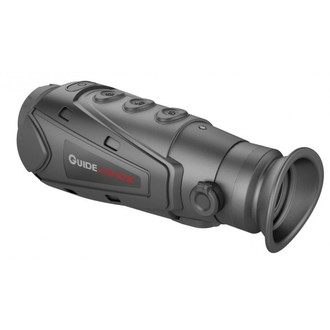 9.4 / 10
Rating
|
The best industrial thermal imagers
|
420 000 (with 9Hz sensor)
Speaking of devices, not “to see,” but “to measure,” involuntarily eyes turn in the direction of Fluke: the brand, anyway, is almost legendary in this area. In the line TiS, made in the form factor "pistols", model 75 is the most "senior", and therefore clearly claims a place in the top ranking. Let's start with the fact that this thermal imager is included in the state register, that is, it can definitely be considered not an “indicator”, but an exact measuring device. Displaying the signal from the 320x240 matrix on the screen, it simultaneously displays data on the temperature of the point under the gun. Focusing optics is manual, so Fluke is equally good for inspecting the “picture as a whole,” and for individual parts close up (the minimum focusing distance is 15 cm). The range of measured temperatures from -20 to 550 ° C. Measurement is performed in a customizable area, you can display as the minimum or maximum temperature, and the average. The infrared camera is not the only thing built into the device. At the same time, a 5-megapixel camera of the visible range is working with it, the signal from both sensors is superimposed in the form of “picture in picture”. Both regular photos and photos with full radiometric data in a proprietary format can be recorded on the SD card or in the internal memory. Similarly, the video is “written” either normal or with full radiometry in IS3 format. True, the frame rate in his most affordable performance is small - the 9-Hz IR matrix does not shine with speed, but you are not going to make films with a measuring thermal imager? The more expensive version of the thermal imager, however, already supports 30 hertz, but also costs much more. Finally, TiS75 can work with voice annotation, if you connect a Bluetooth-headset to it. Main advantages:
Minuses:
|
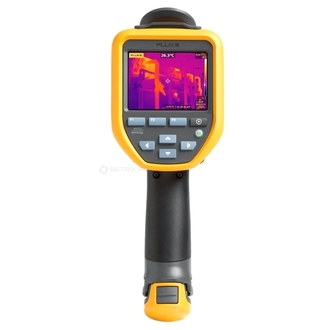 9.9 / 10
Rating
|
|
145 000
What does not take away from the German company is memorization for the Russian ear - of course, everyone understands that the name comes from the word "test", but instead of "testo" the "dough" is hard to read. Comparing prices with top Fluke, you involuntarily begin to suspect a serious difference in performance. Yes, this imager is really simpler at times. Let's start with the sensor - its physical resolution is twice as small on the sides and four times - in area than that of Fluke, and the image is “pulled out” to 320x240 already with the help of software upscale.Optics - with fixed focus, and when working with closely spaced objects Testo with a roar loses Fluke - here the minimum working distance is not 15 cm, but all half a meter. In principle, it is convenient to work, especially if you use a smartphone or a tablet paired with a thermal imager: it can work both as a display and as a data storage device. The frame refresh rate is 9 Hz; options with a faster matrix like Fluke are not offered. The measurement range is self-tuning: the device can choose the most suitable, from -30 ° C to 100 ° C or from 0 ° C to 650 ° C. Taking into account the fact that the accuracy here is the same as that of Fluke, even here Testo takes revenge: if “in the minus” its range is wider by 10 degrees, then “in plus” is already one hundred percent. Main advantages:
Minuses:
|
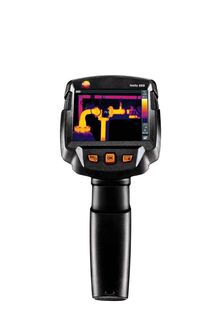 9.6 / 10
Rating
Reviews
It showed itself well in work, the same heat leaks are immediately visible, and standing under the bright sun and in the cold. |
|
31 900
However, the Testo price can be a serious reason to think - “is there a need for a thermal imager at all, isn’t it enough in the old way?”. Well, then you are unlikely to be terrified by the price of CEM DT-9868. But keep in mind that cheapness is not a consequence of the altruism of the Chinese manufacturer. First of all, the device is not included in the state register, that is, despite the declared accuracy of 2 degrees, as in the more expensive models, it does not pass calibration and is de facto a “meter”. But the dog was buried the longest and deeper, of course, when choosing a sensor. His physical resolution ... Hmm, how can I say this so as not to terrify right away? In general, the matrix here is already 32 pixels wide and 31 high. Yes, we have not forgotten any number either in front or behind these numbers. In visual mode, the camera is no better used, its resolution is already 48.6 kilopixels. That is, when working, you should not rely on a detailed and clear image - rather, you will simply play hot and cold in the brightness of fuzzy contours. Another thing is that often these capabilities of the thermal imager are enough “for the eyes”, so such a simple model has its right to life. Main advantages:
Minuses:
|
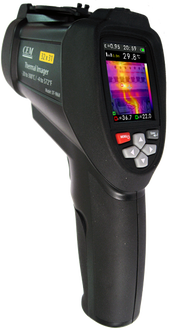 8.8 / 10
Rating
Reviews
I do not need perfect accuracy or detailed photos, but the task of “find the heated contact in the shield” and such a thermal imager copes perfectly. |
Top Thermal Imaging Consoles
|
Seek Thermal Compact XR
27 950
So, why should we overpay for the screen, batteries and related elements of circuitry and software, if we already have it all in the smartphone? Yes, in the age of gadgets, the appearance of thermal imagers of this format was inevitable.
A camera with a bolometric matrix at 206x156 pixels, which has a refresh rate of 9 Hz, even has an adjustable focus - not bad for such a “baby”. By the way, we think the manufacturer managed to say “a couple of gentle” to Apple: because of the lack of a standard microUSB on their smartphones and tablets, they had to release a separate “apple” version with a Lightning connector. The prefix cannot be called a toy - the image it gives is of sufficient quality, and the standard software automatically displays information on the maximum and minimum temperature in the frame on the smartphone screen. Updating the software of the camera is convenient - it is “embedded” in the application itself when released, that is, after the smartphone automatically updates the program from its market, it will, when it is first launched without any manipulations from the user, flood the update into the thermal imager. Main advantages:
Minuses:
|
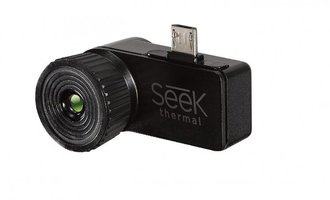 9.6 / 10
Rating
Reviews
Well, I would not call it a toy - the thing is actually useful, much better than ordinary thermal imagers for the same money. |
Which thermal imager is better to buy?
Any thermal imager in its essence is a video camera, just working in an unusual range. Therefore, the basic requirements are common, even for clever thermal sights, even for simple “peepers” - this is the quality of optics and matrix.
While in photo-video we have long been accustomed to solid numbers of megapixels in arrays, with thermal imagers everything is much simpler - even very expensive models have scanty dimensions of arrays that do not reach half of megapixels. However, they are quite enough even for sights, so do not be afraid of small numbers in the characteristics. But what you need to accurately pay attention to is the frame rate of the matrix. This is especially important for thermal sights, and it is not difficult to understand why.
Suppose we take the matrix of the usual type for industrial thermal imagers, where the frame rate is 9 Hz. That is, in our field of view, the frames will alternate with a large pause, and due to the transfer of the video signal to the standard PAL or NTSC format, even more than you can expect: the second is 7.5. Imagine that you clicked on the descent between these frames: you were aiming at one point, and the target has already shifted to the side since the previous one was drawn. Well, yes, gamers certainly now remembered and frametime, and ping, and tikreyt, and other curses network battles. Even when shooting from a run-in, when a hunter watches the game stop, the low frame rate of the imager can play a cruel joke. But at least here, sanctions are a plus for us: to take a thermal imager with a frequency higher than 9 Hz now from America is a matter of great success, they are usually classified as “dual-use products”. But the domestic "Dedaly" with its 50 Hz sold as if nothing had happened.
For thermal imagers used for observations, the matrix frequency is no longer so fundamental, but comes forward again if the device is used as an IR video camera. So in any case, pay attention not only to the clarity of the image, but also to the frame rate. The most convenient is that the imager, unlike night vision devices, can be safely checked during the day at the store, so feel free to compare several models, the light does not hurt.
As for the lens, the most expensive and high-quality ones are still made of pure germanium. From here, by the way, the considerable price of thermal imaging sights is largely formed. But after the invention of chalcogenide glass, thermal imagers literally “stepped into the masses” - the difference in the price of raw materials is huge. Do not be afraid: let the lenses out of it and are sometimes thousands of times cheaper than germanium, it is absolutely not important for most purposes. After all, we are not choosing an aiming complex for an assault helicopter, which must “see” several tens of kilometers ahead, right?
